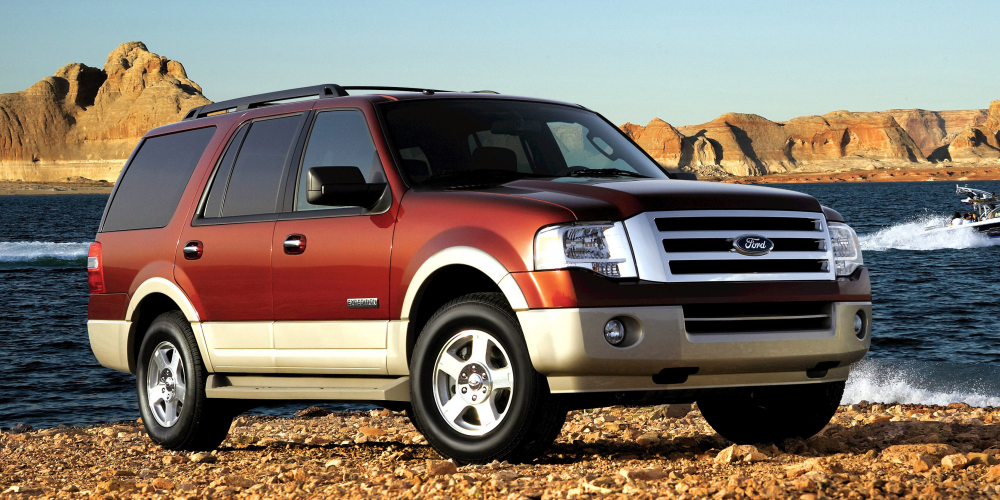

But since it isn’t me that’s going to make your payments, the choice is yours. What’s more, it can tow more than the 8400 pounds (3810 kilos) of the Navigator. Poor old me thinks that the Ford is a better investment. That of a Ford Expedition Platinum with regular wheelbase is $81,349. Its base price is $89,600 (regular wheelbase). Sure, the Navigator is more muscular, better finished and nicer in my opinion. Other than these petty practical considerations, I wonder about the positioning of the Expedition and, more importantly, of the Navigator in the Ford/Lincoln lineup. For them, the FX4 option brings, among other things, special dampers, an electronic rear differential and skid plates. A few contractors that have to deal with muddy or rocky terrain will get some fun out of it. The Expedition’s off-road capabilities are far superior to what the average Joe will ever need. The 285/45R22 tires, which would make Bill Gates shed a tear if he had to replace them, have a lot to do with it! The optional Continuously Controlled Damping suspension offered on the Platinum version enhances comfort and makes the ride more dynamic. The independent four-wheel suspension-the F-150 has a solid axle rear suspension-offers extra comfort. The steering could give a little more feedback and could be more direct, but don’t forget that this is not a Focus RS.

Sure, you feel a little body roll, but it’s well within the acceptable range for such a big and heavy vehicle with a high centre of gravity. On the road, the Expedition demonstrates poise, even in curves. It can tow up to 9300 pounds (4219 kg) when equipped with the Towing Package, a $1,400 option. Don’t kid yourself, though-this is no featherweight, unless you think a feather weighs nearly 2700 kg. And just like the F-150, the Expedition has an all-aluminum body, which helps it shed 136 kilograms compared to the previous generation. The aforementioned mechanical features also come from this pickup, which is the most popular in Canada. The Expedition is built on the same chassis as the F-150. That isn’t too shabby for such a big vehicle, but that proves that even if you can get a relatively economical ride from the Expedition (and from most of the full-size SUVs in the world, all manufacturers combined), it doesn’t take much for the fuel consumption to increase dramatically. However, on a jaunt up a very steep forest road and through a small off-road circuit (very light off-roading, even a Focus could have done it without much difficulty), this figure quickly climbed to 15.7. At the wheel of the Limited version, on a highway and on secondary roads, we recorded an average fuel consumption of 13.3 L/100 km.

It allows the engine to only rev at 1600 rpm at 100 km/h (1900 in Sport mode-a confusing mode in an SUV of this size, but we’ll come back to that). The 10-speed automatic gearbox does an extraordinary job and you’d really have to nitpick to find fault with it. Moreover, it reaches its torque peak a little sooner, at 3250 rpm, which improves passing performance. at 3500 rpm in all versions, except the Platinum that benefits from 25 more horsepower and 10 more lb.-ft. Regardless of the length of the Expedition, there’s just one engine: the ubiquitous twin-turbo, 3.5-litre V6 that already equips vehicles as diverse as the F-150 and the GT sports car! In the Expedition, this V6 delivers 375 horsepower at 5000 rpm and a torque of 470 lb.-ft.


 0 kommentar(er)
0 kommentar(er)
